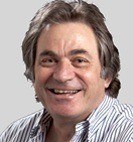The theme of my last column was that the standard assumed value of $850,000 being an indicative amount of savings to maintain a comfortable lifestyle for a retiring couple – at $55,080 per annum according to the Association of Superannuation Funds of Australia (ASFA) – doesn’t last as long as many people might think.
If saving more before retirement is not feasible, assets that are riskier than a balanced fund may need to be considered during retirement. The ASFA assumption is that a balanced fund might earn 7% per annum after fees and taxes but, like last financial year, the actual return can fall far short of that average. Inflation is assumed to be 3% per annum.
So how risky are equities? Before I deal with how to use equities in an SMSF effectively in my next column, allow me to explore first some long-run historical properties of equity returns.
Equity returns
Data on the All Ordinaries goes back to 1900 – in monthly averages – but only for the price index, meaning that dividends are not being reinvested. In Chart 1, I show 20-year rolling annual averages of returns on this index to give an idea of what equity market volatility might mean in the long run over the course of retirement. I have written elsewhere that I believe a conservative average return is about 5% for Australian equities.
The lowest 20-year return has been about 2.5%, which is about the expected rate of inflation going forward. In other words, if a person retires at 60 and does not draw down capital, it might be reasonable to think that there is a good chance all capital will be preserved after inflation to the age of 80! The usual disclaimer about past performance not being a reliable predictor of future returns should be heeded.
Chart 1: Rolling 20-year averages of the All Ordinaries price index from 1900 to the present
 Of course, a retiree needs funds to live on – so what about dividends?
Of course, a retiree needs funds to live on – so what about dividends?
The longest series I can find on dividends is for the S&P/ASX200. I show these for each financial years between 1985/86 and 2011/12 in Chart 2 below.
Dividend yields have been quite stable over this period. If they are indicative of future yields – and we take franking credits into account at, say, dividends being 80% franked – there are only four years when these grossed-up yields did not exceed 5%. The smallest grossed-up yield was 4.3%. A fund in pension mode doesn’t normally attract tax and franking credits are returned to the retiree.
In pension mode, 4% must be withdrawn from the fund between the ages of 60 and 65, 5% per annum over the next five years and the minimum drawdown increases in steps thereafter. If we now take the ASX200 index and deduct 5% from the grossed-up dividends – and only draw down capital when grossed-up dividends are lower than 5% – the index would return 6.9% per annum after a 5% a year drawdown with excess dividends being reinvested.
That return is almost the same as the expected return on a balanced fund before drawdown. Of course keeping a constant 5% drawdown means that the pension in dollar terms fluctuates with the capital value. In my next column, I shall consider how to keep a small pool of cash in a separate ‘bucket’ to help smooth out the retiree’s income stream.
Chart 2: Dividend yields on the ASX 200 1985/86 to the present
 Ron Bewley is the executive director of Woodhall Investment Research.
Ron Bewley is the executive director of Woodhall Investment Research.
Important information: This content has been prepared without taking account of the objectives, financial situation or needs of any particular individual. It does not constitute formal advice. Anyone should consider the appropriateness of the information in regards to their circumstances.
Also in the Switzer Super Report:
- Peter Switzer: The muddle through is speeding up
- Chris Gray: Are you too old to invest in property using super?
- Charlie Aitken: Stock buys for the new financial year
- Andrew Bloore: Nine new rules for your super start now

